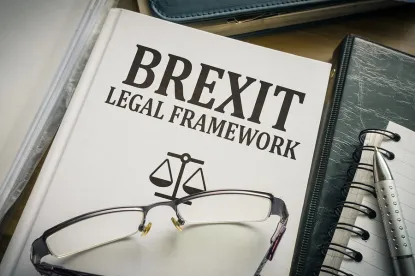For the purposes of the present case, therefore, the relevant limit upon the power to prorogue can be expressed in this way: that a decision to prorogue Parliament (or to advise the monarch to prorogue Parliament) will be unlawful if the prorogation has the effect of frustrating or preventing, without reasonable justification, the ability of Parliament to carry out its constitutional functions as a legislature and as the body responsible for the supervision of the executive. In such a situation, the court will intervene if the effect is sufficiently serious to justify such an exceptional course.
In a major departure from the orthodox approach taken by the English High Court, the UK Supreme Court has unanimously ruled that the government’s decision to prorogue Parliament was unlawful, void and of no effect. The Supreme Court also ruled that the government’s advice to the Crown was unlawful.
The Court’s ruling means that Parliament once again can assume an active role in the ongoing Brexit process. However, much uncertainty remains and the October 31 date for the UK to leave the European Union is fast approaching.
The Supreme Court considered that the government’s intention, and the effect of prorogation, would be to frustrate the ability of Parliament to carry out its essential constitutional functions of legislating, and of holding government to account. That decision was based in large part on the distinction between prorogation and a Parliamentary recess. During a prorogation there can be no debate in the Chamber, and it is not possible for Select Committee or individual Members of Parliament to raise oral or written questions. The government's internal papers highlighted the political benefits of prorogation, but did not address the alternative possibility of a recess. Given the political context, with the October 31 Brexit deadline looming, the Supreme Court decided that the “effects on the fundamentals of our democracy were extreme.”
Given that prorogation was unlawful, void and of no effect, an immediate consequence is that legislation (including essential Brexit-related laws such as the Trade Bill) remain available for further Parliamentary stages. It also arguably becomes possible for the Speaker and Lord Speaker to convene Parliament and its committees without further reference to the government – though that is likely to spark conflict with the government's business managers including, crucially, Jacob Rees-Mogg as Leader of the House of Commons.
A Constitutional Conflict?
Anticipating the Supreme Court ruling, some US-based legal commentators characterized the possibility of a decision against the government as the UK's “Marbury v Madison” moment, recalling the seminal US Supreme Court decision of 1803 in which Chief Justice John Marshal asserted the court's right to review both executive and legislative acts, and to strike down any that were found to be unconstitutional.
The Supreme Court’s unanimous decision was expressly framed as a judgment on the limits of the prerogative power to prorogue Parliament, finding that the court is entitled to identify those limits. The court rejected the government's argument, that the Bill of Rights 1688 prevented the court from challenging the prerogative power to suspend Parliament because it was a “proceeding in Parliament.” Delivering the ruling, Baroness Hale emphasized that prorogation was in fact not a “proceeding in Parliament,” but was imposed on Parliament from outside, and if upheld would mean that Parliament’s proceedings were unprotected.
Crucially, the Supreme Court ruling relates only to the specific decision to prorogue Parliament on September 10. It arguably remains open to the government to seek a further prorogation, with the risk of setting up a further legal challenge.
October 31: Deal Or No Deal?
The Supreme Court ruling does not alter the underlying legislative position. October 31, 2019 is “exit day” for the purposes of the EU (Withdrawal) Act 2018. The emergency legislation passed by Parliament on September 10 sets a deadline of October 19 for the government to:
-
Present a withdrawal agreement for approval in the House of Commons
-
Obtain a House of Commons resolution in favor of a “no deal” Brexit; or
-
Request an extension of the UK’s Article 50 notice period to January 31 2020.
Assuming that there is a firm majority in the House of Commons against a “no deal” Brexit, the next steps must be for the government to seek approval either to the existing draft Withdrawal Agreement and Political Declaration (the principal benefit of which would be to secure a transition period up to December 2020), or to depart from the government’s determination to resist any extension beyond October 31.
An extension may be requested, but that would not guarantee EU agreement to delay Brexit beyond October 31. If the EU were to agree, then on the argument advanced by Theresa May’s government in March and April 2019, that extension would be effective as a matter of international law even without UK legislation. However, a further statutory instrument to amend the definition of “exit day” under EU (Withdrawal Act) 2018 would be valuable as it would remove doubts over the position in UK domestic law.
If, by contrast, the EU were to refuse an extension, then it would be necessary for Parliament to legislate in order to avoid an October 31 “no deal” exit. That would require Parliamentary time, and if opposed by the government, the most likely mechanism would be a further emergency motion under Standing Order 24. Even if Parliament were to reconvene immediately, Parliamentary time is short. Given that the government can claim that it would be unfair to recall Parliament during the Conservative Party conference (September 28 to October 2) that available time would be still further compressed.
For business planning and Brexit resilience purposes, it remains necessary to keep a close watch on the government's response to the Supreme Court ruling, and to keep in mind the continuing possibility of a “no deal” exit on October 31.



 />i
/>i

